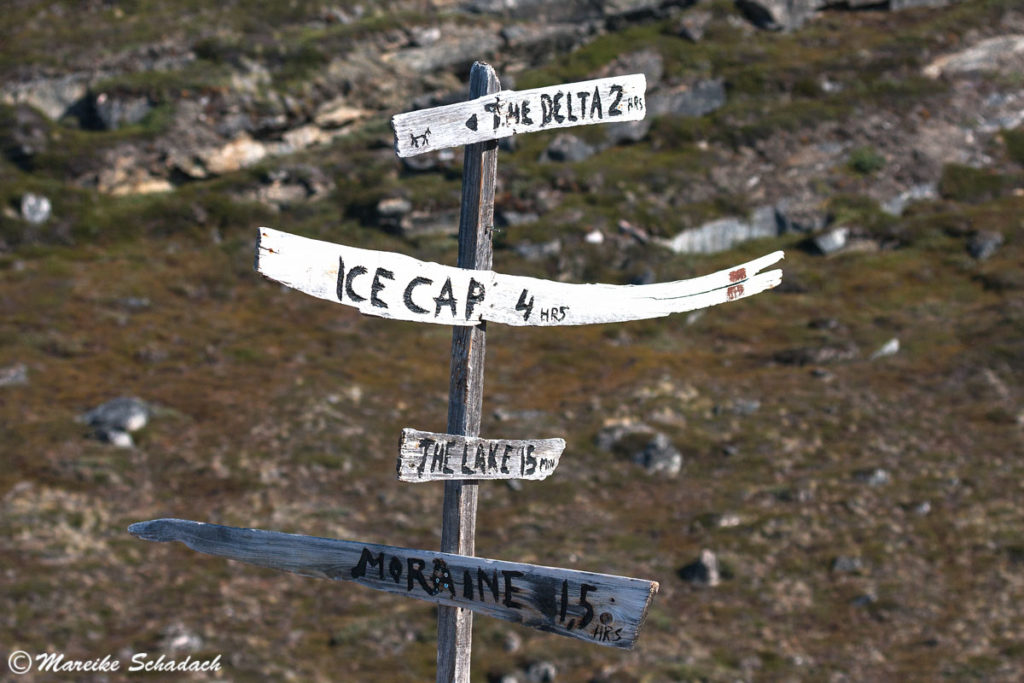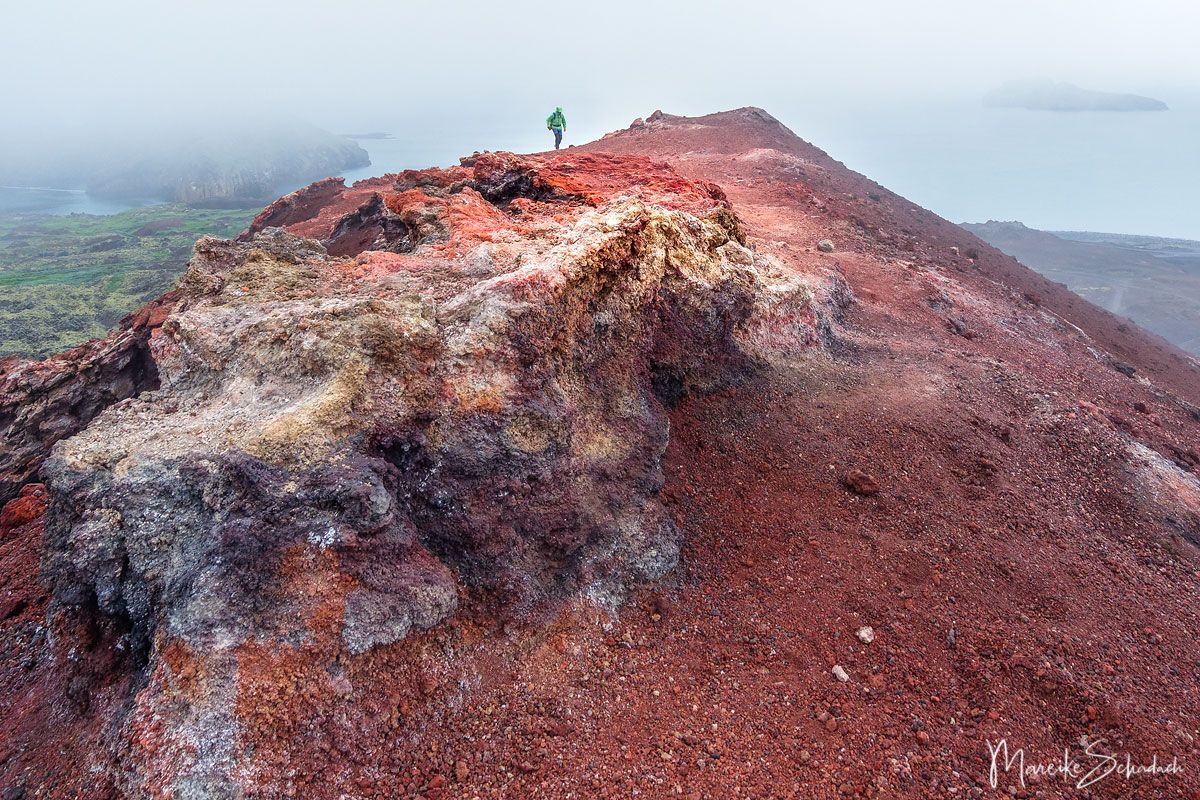Iceland. In the southeast of Iceland, right next to the mighty Vatnajökull glacier, are Iceland's crown jewels: Jökulsárlón, Fjallsárlón and Heinabergslón. Mother Nature has outdone herself with these three glacier lagoons, each a unique natural wonder in its own right. However, most Iceland travelers only visit the Jökulsárlón lagoon. Why is that? Aren't the others worthwhile? I wanted to know and visited all three glacier lagoons in Iceland. Here I tell you how the three lagoons differ and what makes each of them worth seeing.
Unassigned, unpaid advertising. The article contains affiliate links.
What is a Glacial Lagoon and how is it formed?
Jökulsárlón, Fjallsárlón or Heinabergslón? Which is the most beautiful Glacial Lagoon in Iceland?
Seals in the Glacier Lagoons
What can one do at the Glacier Lagoons?
Safety
Location and how to get to the Glacier Lagoons in the South of Iceland
Camping near the Glacier Lagoons
Interesting Places near the Ice Lagoons
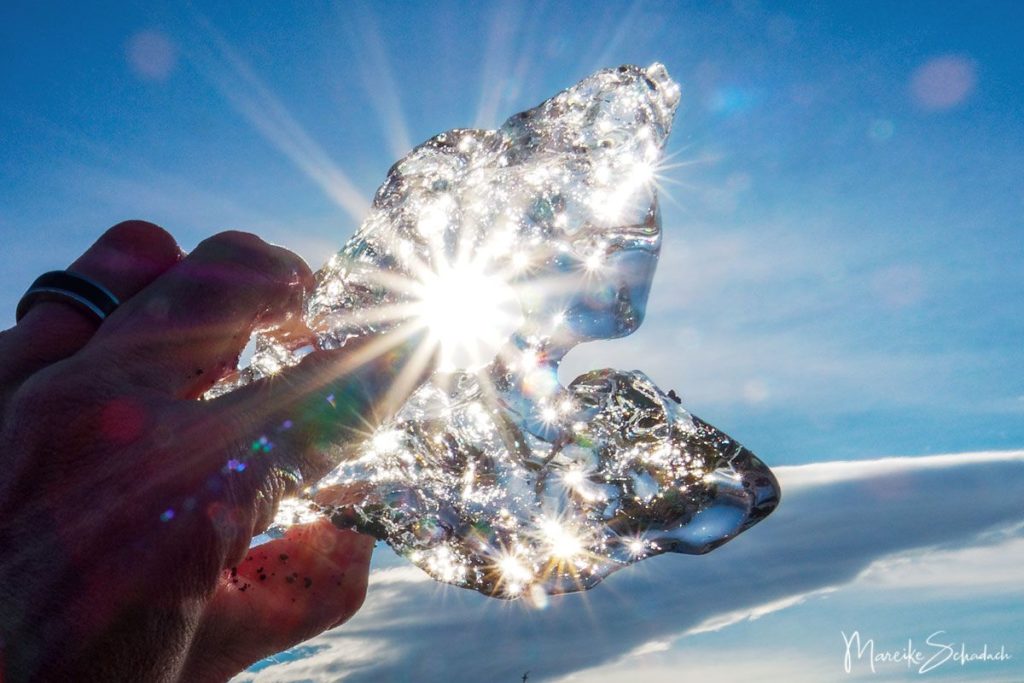
What is a Glacial Lagoon and how is it formed?
Glacial lagoons are formed when meltwater from a glacier collects in a depression in the ground and cannot drain away. This depression eventually grows into a basin, the glacial lagoon, through erosion and retreat of the glacier. Due to the large amount of sediment transported with the glaciers, glacial lagoons are usually cloudy and resemble a café latte.
Icebergs break off from the edge of the glacier into the lagoons, where they slowly melt. Each iceberg is unique in size, shape and coloring. Most of the time they are white. This is due to the trapped air bubbles that scatter the light. But there are also icebergs that are almost transparent. Their ice is older and pressure has forced the air bubbles out of the ice. Here in Iceland, many icebergs also have black stripes, spots or patterns. This is the embedded ash from past volcanic eruptions.
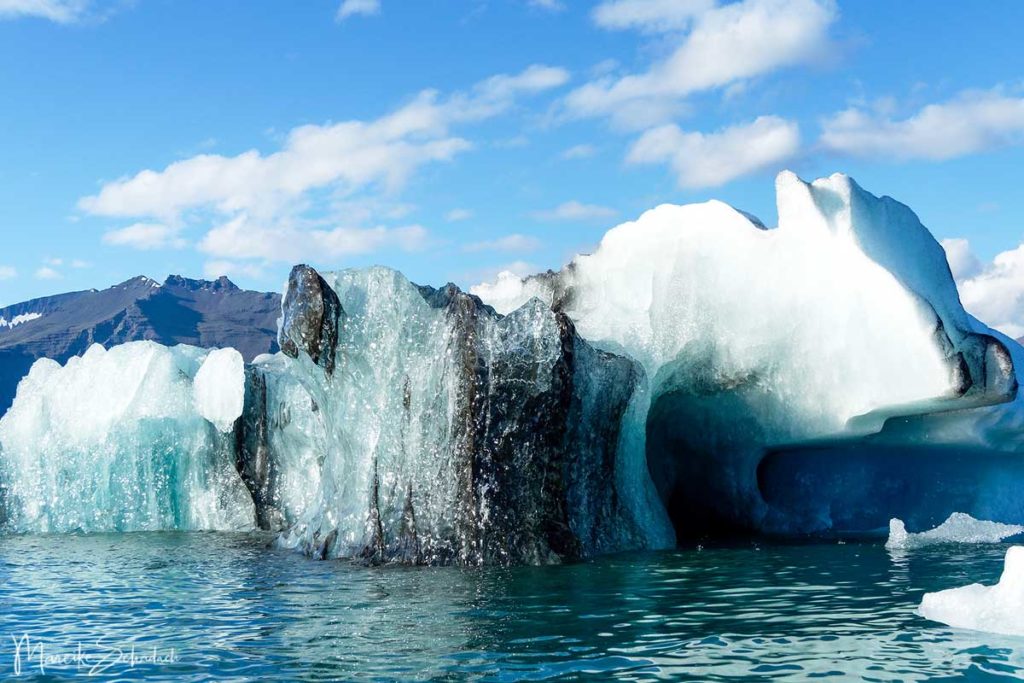
Jökulsárlón, Fjallsárlón or Heinabergslón? Which is the most beautiful Glacial Lagoon in Iceland?
It is hard to say which of the three ice lagoons is the most beautiful. Each of them is a natural beauty and has its own special features that make it stand out from the other lagoons. Here are a few details:
Jökulsárlón – big Icebergs, Seals and clear Water
Jökulsárlón is located at the foot of the glacier Breiðamerkurjökull and is the most famous of the glacial lagoons in Iceland. Its formation is not at all long ago and began around 1920 with the shrinking of Breiðamerkurjökull. Since then, it has been growing incredibly fast. Frighteningly fast, because its growth is synonymous with the retreat of the glacier's edge and the melting of Breiðamerkurjökull.
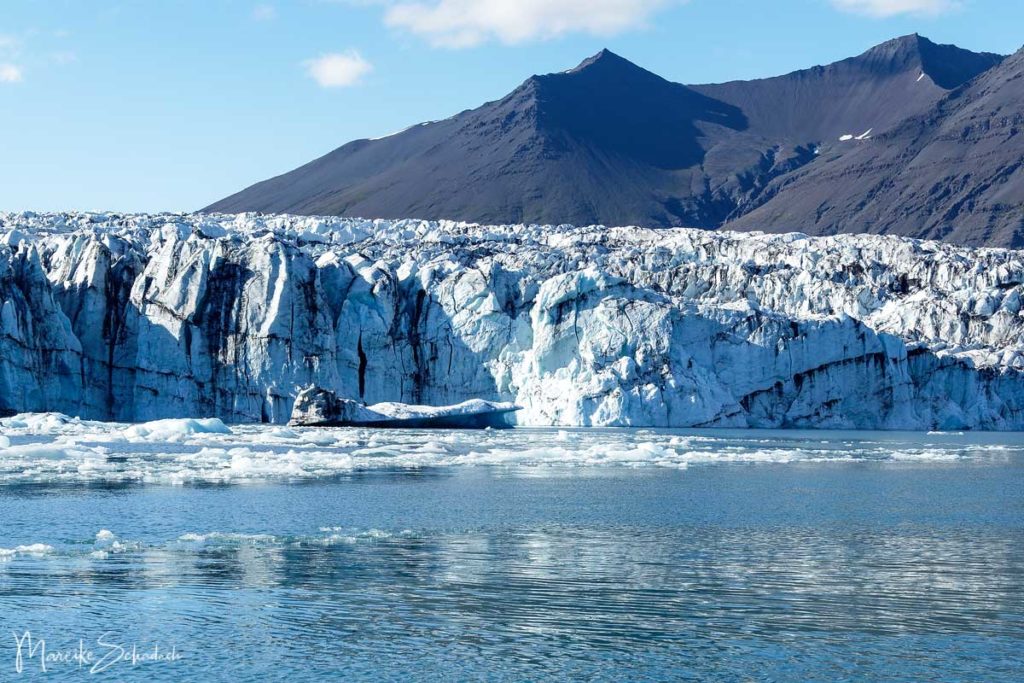
In 1956, the lagoon covered an area of 4.5 km². Twenty years later it has about doubled its size. Today, Jökulsárlón is about 30 km² and continues to grow. With a depth of up to 260 meters, the ice lagoon is also the deepest lake in all of Iceland. But the landscape here is changing fast - in the future the lagoon will grow into a deep fjord.
Jökulsárlón is larger and more dramatic than the other ice lagoons in Iceland. The outlet glacier rises about 30 meters above the waterline. When it calves, the ice chunks that fall into the water can be several stories high. Then they float as icebergs in all imaginable shapes on the lagoon. And remember - only about one tenth of the iceberg is visible above the water surface! And there is something else that distinguishes Jökulsárlón from all other glacial lagoons in Iceland: its water is clear and turquoise.Normally, glacier outlets are milky murky. But due to the connection to the sea and the tides, the lagoon is regularly "washed".

Some of the icebergs find their way into the open sea. Here they are exposed to the heavy surf and break into many small "diamonds". You will then find them washed up on the so-called “Diamond Beach”The fragments of the large icebergs sparkle here on the black sand of Breiðamerkursandur. A unique sight, unique in the world and an absolute highlight for every photographer!
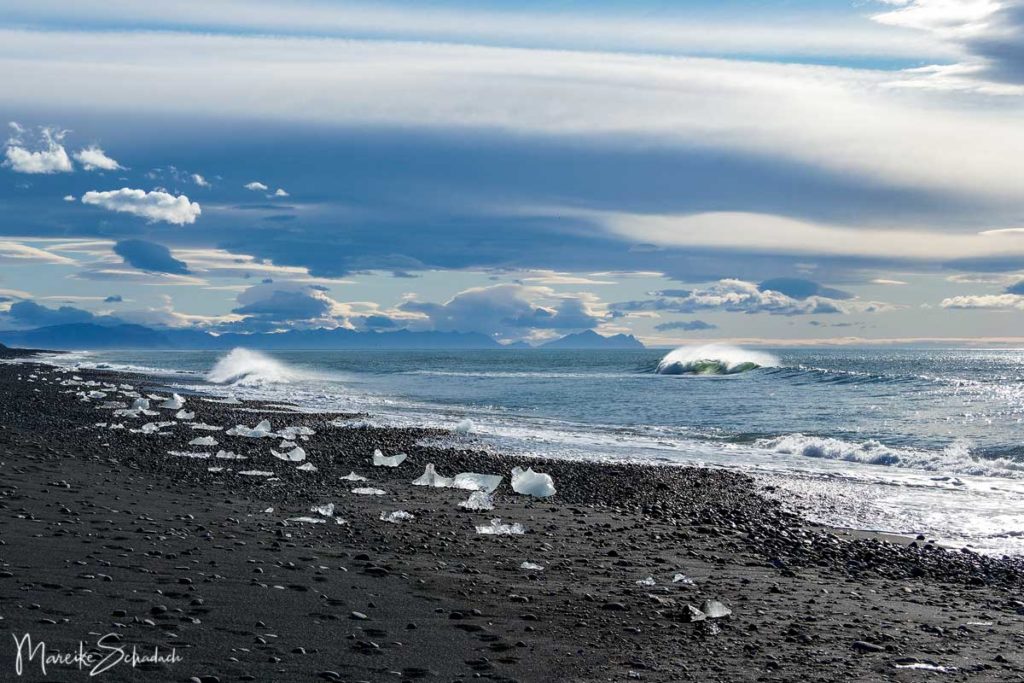
Fjallsárlón - very close to the Glacier Edge
Do you prefer a little less hustle and bustle?Then I can recommend the smaller glacier lagoon Fjallsárlón. Its area is only about one fifth of the area of Jökulsárlón. But the icebergs floating on it are just as big. Advantage of Fjallsárlón compared to Jökulsárlón: You have a better view of the outlet glacier Fjallsárlón and you are much closer to the ice edge. Because of the proximity you can hear the glacier working. The cracking and crunching of the ice underlines the fantastic view of the glacier.

Heinabergslón - off the beaten Track
Heinabergslón is fed by the outlet glacier Heinabergsjökull, itself part of Vatnajökull. The somewhat lesser known ice lagoon lies off the beaten visitor path about 40 kilometers east of Jökulsárlón. A gravel road leads from the ring road to a parking lot, where a breathtaking panorama opens up. If you find the other two ice lagoons too busy and are looking for a quieter alternative, then Heinabergslón is the place for you.
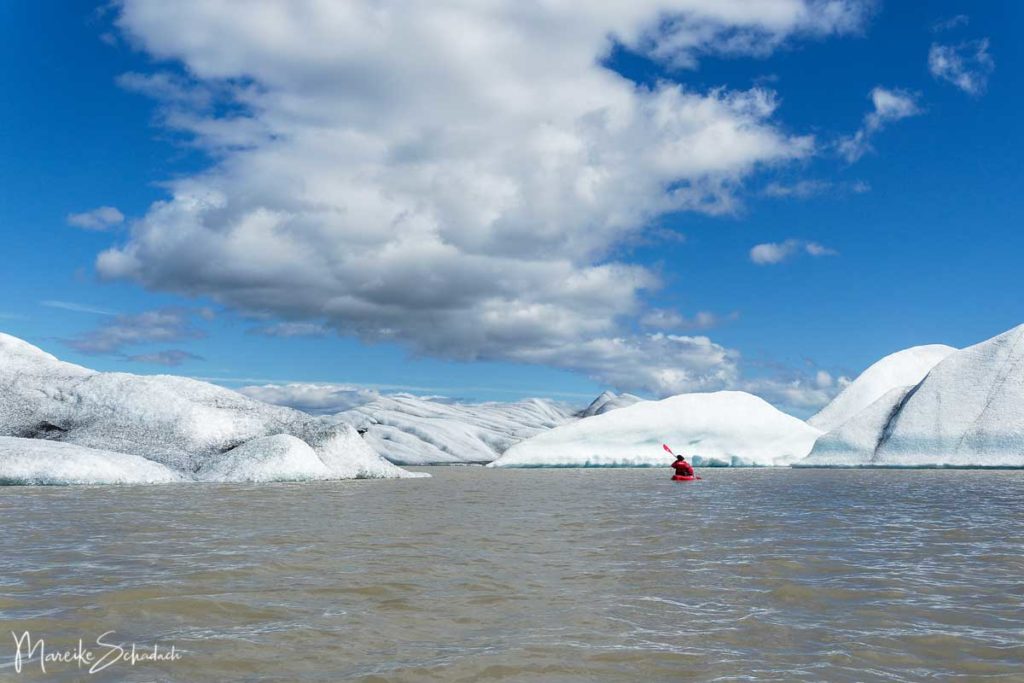
Besides a small hike, you also have the possibility to do a kayak tour between the icebergs. The lagoon is a bit smaller, which is convenient for the kayak tour. Because already after a short paddle we were surrounded by impressive icebergs. We could even paddle up to the glacier and take a little walk on the ice.

Seals in the Glacier Lagoons
In the ice lagoon Jökulsárlón you can watch seals all year round. They swim around between the icebergs and every now and then you can see a head peeking out of the water. I have seen especially many seals directly at the outflow of the lagoon into the sea. Possibly there are the most fish here. Also in the Fjallsárlón there should be seals, but I didn't see any here. Only in the Heinabergslón you will not see seals for sure, because the connection to the sea is missing.

What can one do at the Glacier Lagoons?
You should not miss a boat trip on one of the glacier lagoons. It's a chance to get even closer to the icebergs and the edge of the glacier. I did the "adventure tour" with a Zodiac on the Jökulsárlón lagoon during my last trip to Iceland. That was absolutely impressive. But even better than a ride in a noisy Zodiac boat, I found the kayak tour on the Heinabergslón. Instead of a loud boat engine, we only heard our paddles slowly pulling through the water.
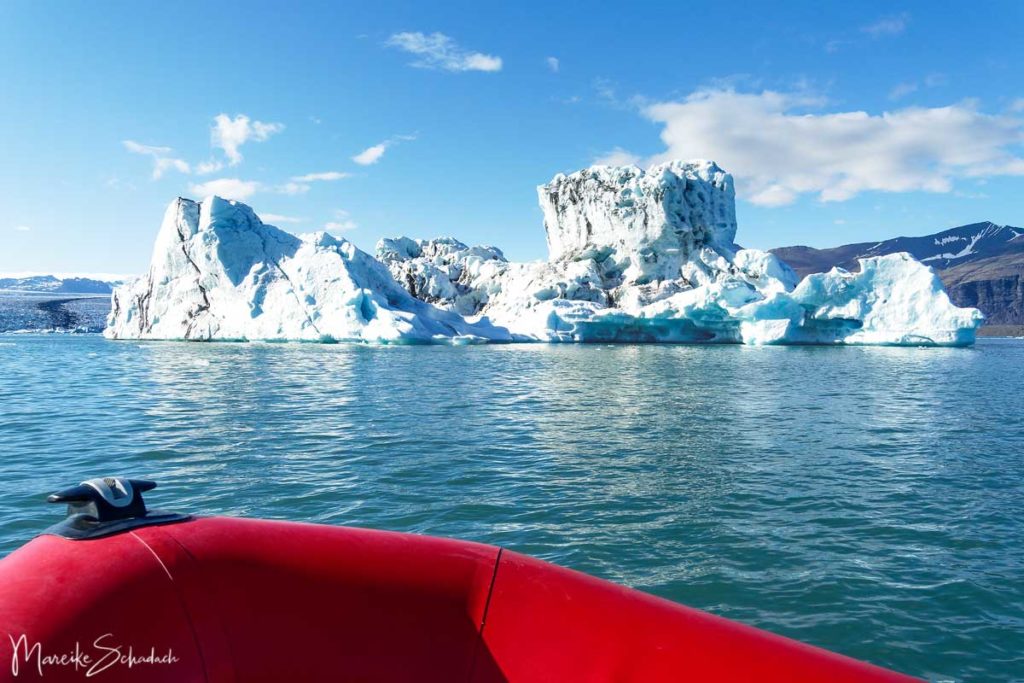
Here is an overview of what you can do:
Jökulsárlón - Tours with Zodiacs, Amphibious Boat and Kayaks
All costs are as of July 2020. If you want to know the current price, please check the website of the tour operator.
Icelagoon Adventure Tours offers private tours as well as special tours for photographers in addition to the popular "Adventure Tours". The total duration of the adventure tour by Zodiac is 1 hour and 45 minutes. Of this time you will be on the water for one hour. Cost: 66 euros.

Tip: It's best to sit at the very front, then you'll have the best photo opportunities.
The tour operator Glacierlagoon has besides Zodiac tours also trips with an amphibious boat in the program. With the amphibious boat you will not get as close to the icebergs as with the Zodiac. The excursion lasts 30-40 minutes. Cost: 40 euros.
Iceland Extreme also offers guided kayak tours. Duration: 1.5 hours. Cost: 69 euros.

Fjallsárlón - Tours with Zodiacs
Fjallsarlón Iceberg Boat Tours offers tours with Zodiac boats. Each boat can take 10 people. The tour on the lagoon takes about 45 minutes. In total you have to plan about 90 minutes with briefing. Cost: 53 euros. After the boat ride you can warm up with a warm meal in the restaurant Frost.
Heinabergslón - Kayak Tours
There are no Zodiac tours on Heinabergslón. Instead, you can join a guided kayak tour with Iceguide and be all alone on the water. A perfect nature experience, absolutely recommendable!
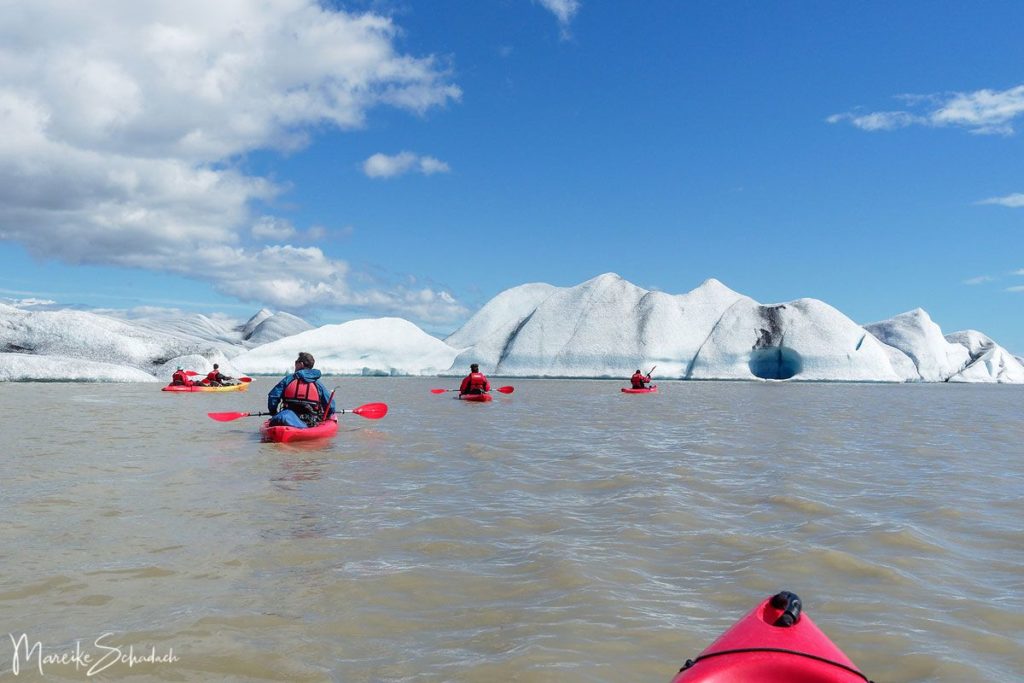
Safety
Glaciers can calve and icebergs can turn or break apart. This can cause large waves. Keep your distance from large icebergs. This applies equally to Zodiac boats, kayaks and also walkers and photographers on the shore.

Location and how to get to the Glacier Lagoons in the South of Iceland
All three lagoons are located on the south coast of Iceland between the Skaftafell Nature Reserve and the town of Höfn. They border Vatnajökull National Park, the largest protected wilderness area in all of Iceland.
Fjallsárlón is the first lagoon you will reach from Reykjavik after about 5 hours of driving (370 km). It is not visible from the ring road. After crossing Fjallsá - the outflow of the lagoon into the sea - there is a turnoff to the left leading to the parking lot.
About 10 km further east is the famous Jökulsárlón lagoon directly on the ring road. Tip: If you are here, take a look at the beautiful Diamondbeach.
Only the ice lagoon Heinabergslón is a bit more difficult to reach. That's why it is less visited. From Jökulsárlón you drive another 40 kilometers on the ring road to Flatey Farm (64°15'32.7″N 15°34'54.7″W). From here it is another 7 kilometers on a gravel road to the parking lot in front of the lagoon.
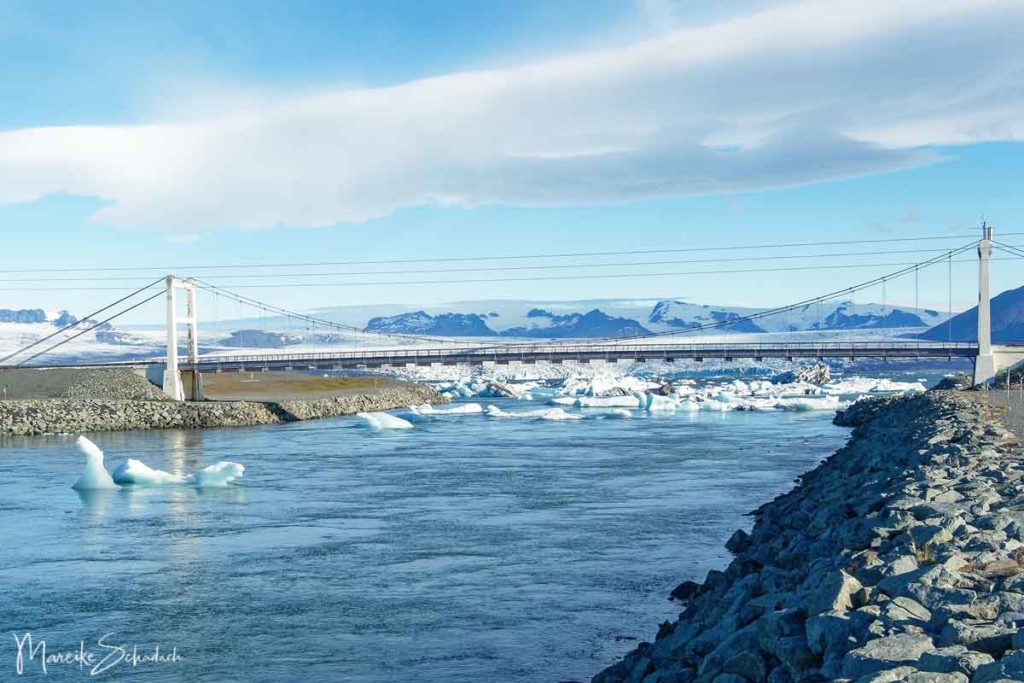
Camping near the Glacier Lagoons
Unfortunately there are no camping possibilities directly at the ice lagoons. The closest places are in Skaftafell or Höfn. Also other accommodations in the vicinity are sparse. You should make a reservation in advance.
If you want to take pictures of the ice lagoons at midnight sun, the longer drive can be a challenge. Unfortunately I didn't make it, I was just too tired. The distances from Jökulsárlón are:
- Skaftafell campground: 58 km / 60 minutes drive.
- Svinafell camping site in Skaftafell: 51 km / 45 minutes driving time
- Höfn camping: 79 km / 60 minutes driving time
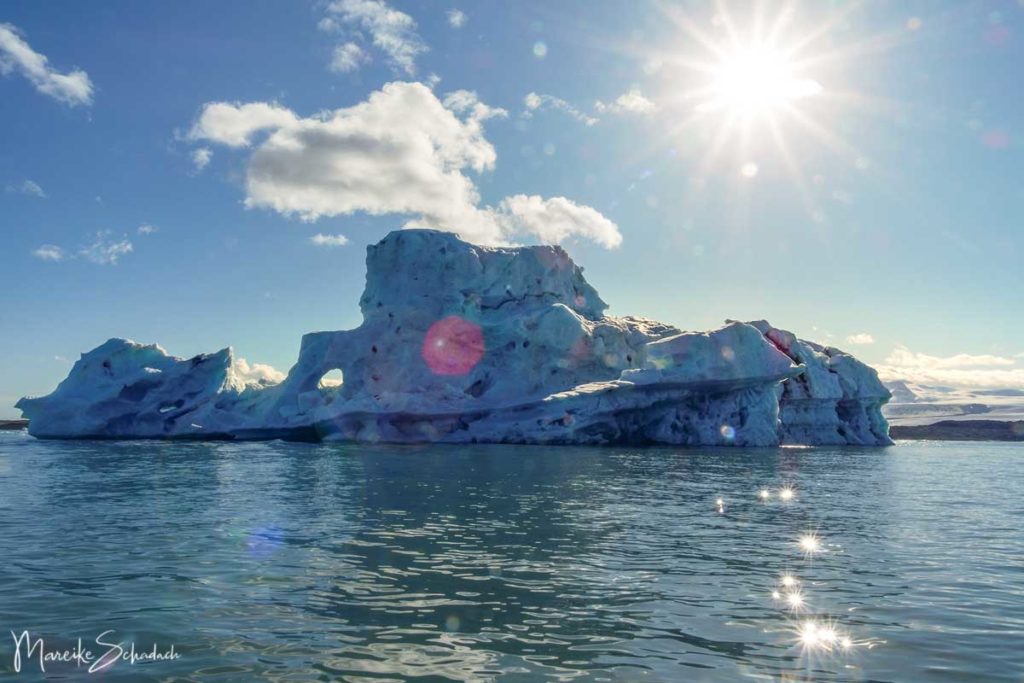
Interesting Places near the Ice Lagoons
Around the glacier lagoons Jökulsárlón, Fjallsárlón and Heinabergslón there are more interesting places in the south of Iceland that are worth a visit:
- The Diamond Beach is one of the most beautiful beaches in Iceland, because this is where the icebergs from the Jökulsárlón strand. It is located right next to the ice lagoon.
- The nature reserve Skaftafell is a popular hiking area with the famous waterfall Svartifoss with its black basalt columns. The popular glacier toursalso start here. Skaftafell is located about 47 km west of Fjallsárlón.
- The Múlagljúfur Canyon is a beautiful gorge with steep rock walls, two waterfalls and spectacular views. About 3.4 kilometers west of Fjallsárlón, the dirt road branches off to the starting point of the hike.
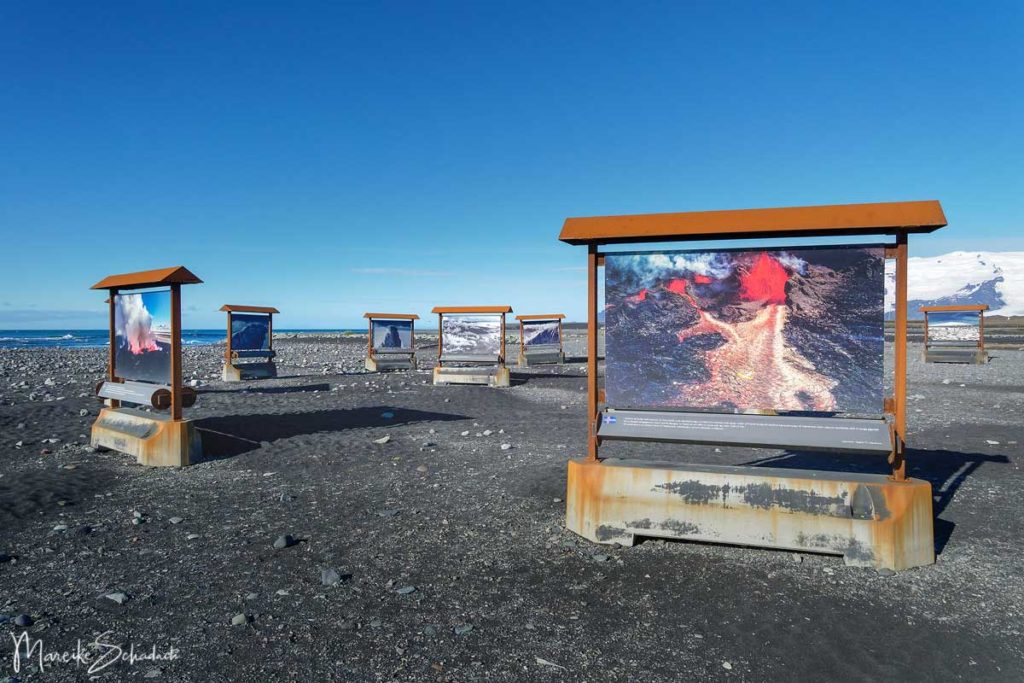
Book Recommendations for Iceland
Do you want to know where the journey is going? Then I can recommend this travel guides* to you.
You can order the travel guides on Amazon by clicking on the pictures. If you buy a product via an affiliate link, I get a small commission and you help me to keep filling Fernweh-Motive with interesting articles. This does not make the product more expensive for you.
Do you know the glacier lagoons in Iceland? Which one did you like best? Do you have any questions or suggestions about my article? If so, please write me a comment!
Do you want to know when there are new articles on my blog? Then follow me on Facebook, Pinterest or Instagram. I would also be very happy if you share my article with your friends.
Recommendations for further Reading
Do you love the Scandinavian countries as much as I do? Then you might also be interested in my articles about the Kayak Tour in the Swedish Archipelago or a Trekking Tour to the Greenlandic Ice Sheet.

